Sometimes life gets busy, and eating habits slip. Before you know it, you’re feeling sluggish, low on energy, and not like yourself. That’s what led me to try a 7-day detox; not as a quick fix, but as a reset to feel clear and refreshed again.
A detox isn’t about starving or drinking only juices. It’s about giving your body whole, simple foods while letting it do what it already does best—clean itself naturally.
In this guide, I’ll share what a detox really means, a full 7-day meal plan, safe tips, and even variations based on your region. You’ll also learn how to keep the benefits going long after the week is done.
Understanding a 7 Day Detox
A 7-day detox is a short-term eating plan designed to help you reset your body using natural, whole foods.
Unlike general healthy eating, which is long-term and flexible, detox diets often restrict processed items, sugar, alcohol, and heavy meals for a week.
The focus is on hydration, fruits, vegetables, lean proteins, and light meals that support digestion and energy.
People try a 7-day detox for different reasons; some want to lose a few pounds quickly, others look to improve digestion, reduce bloating, or feel refreshed after periods of unhealthy eating. It’s essentially a structured, temporary reset for your system.
Does Your Body Really Need a Detox?
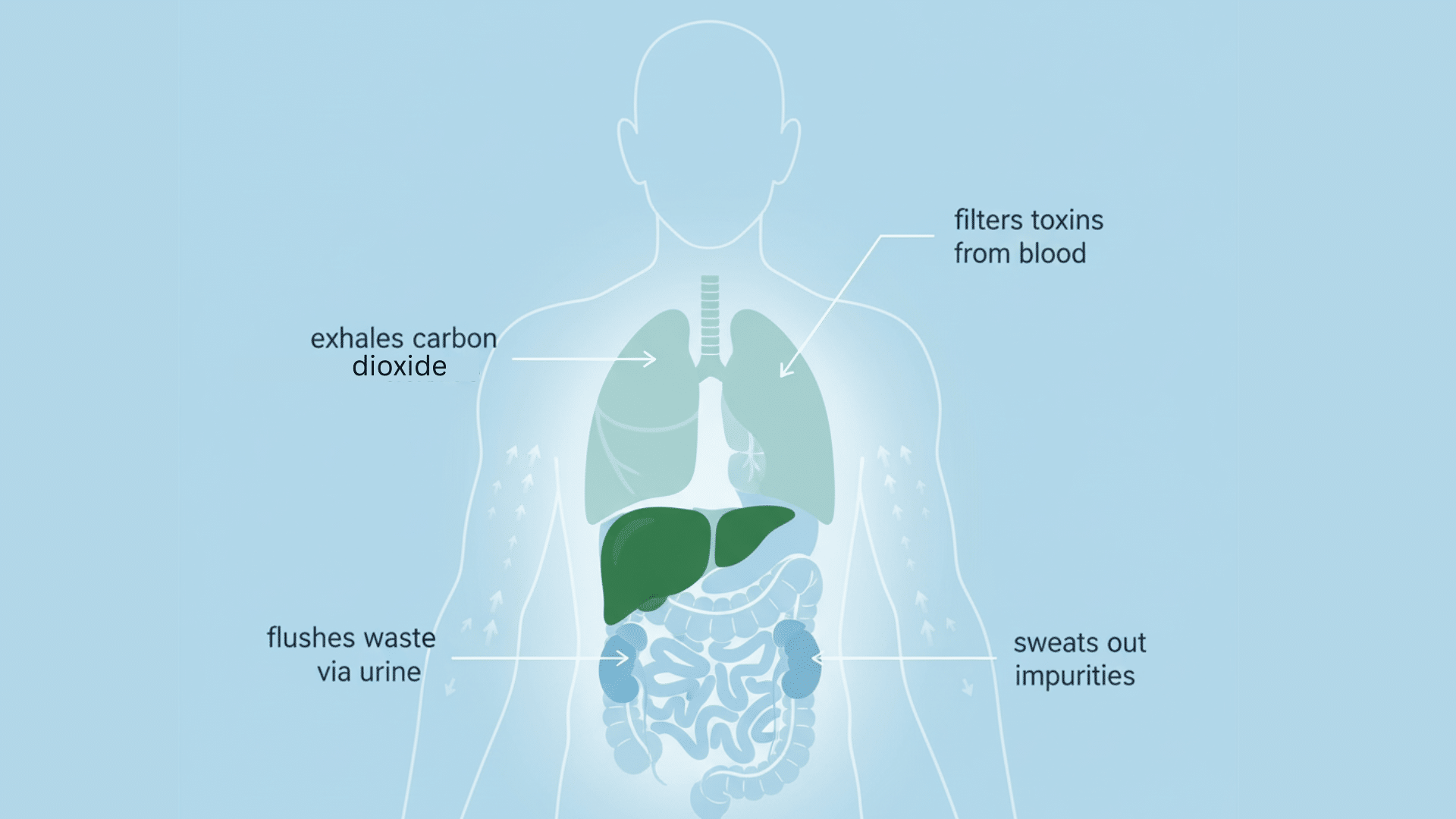
Your body already has a built-in detox system. The liver filters harmful substances, the kidneys flush waste through urine, the skin releases toxins through sweat, and the lungs clear out carbon dioxide.
These organs function continuously without the need for special drinks or pills. Detox diets can sometimes help by encouraging you to eat more fruits, vegetables, and water-rich foods, which support natural processes.
However, myths about “flushing out all toxins” or “resetting organs” are misleading, since no short-term diet can replace your body’s own systems.
7 Day Detox Meal Plan: A Day-by-Day Guide
To make your detox simple and stress-free, here’s a clear day-by-day plan you can follow. Each day includes balanced meals made with fresh, whole foods to help you feel lighter and more energized:
Day 1: Light and Hydrating Start
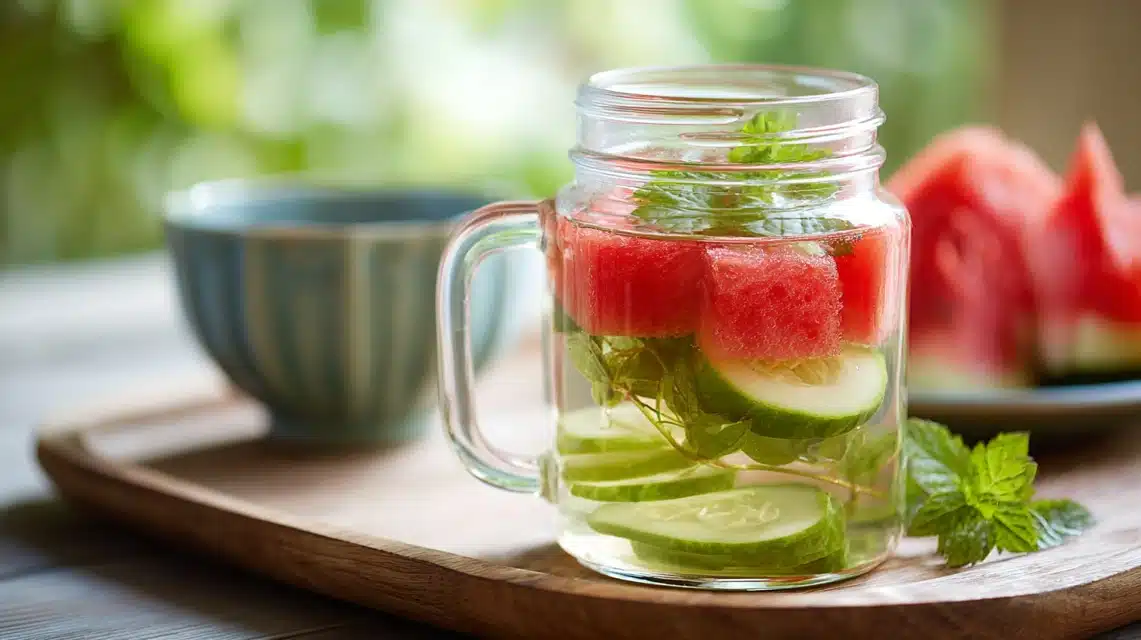
Begin with water, herbal teas, and water-rich fruits like watermelon and oranges. Lunch can include light vegetable soups, while dinner stays simple with steamed vegetables and a small portion of quinoa.
Focus on hydration throughout the day. Snack on cucumbers or celery sticks. This gentle start allows your digestive system to adjust while giving your body an initial cleansing push.
Day 2: Focus on Fiber and Fresh Produce

Build meals around high-fiber foods like apples, pears, oats, and leafy greens. Breakfast may include oatmeal topped with berries, while lunch could feature a hearty salad with chickpeas. For dinner, enjoy stir-fried vegetables with brown rice.
Add healthy snacks like carrot sticks or chia pudding. Fiber helps regulate digestion, keeps you full, and naturally supports detox by encouraging regular elimination and improved gut health during your detox journey.
Day 3: Adding Lean Proteins
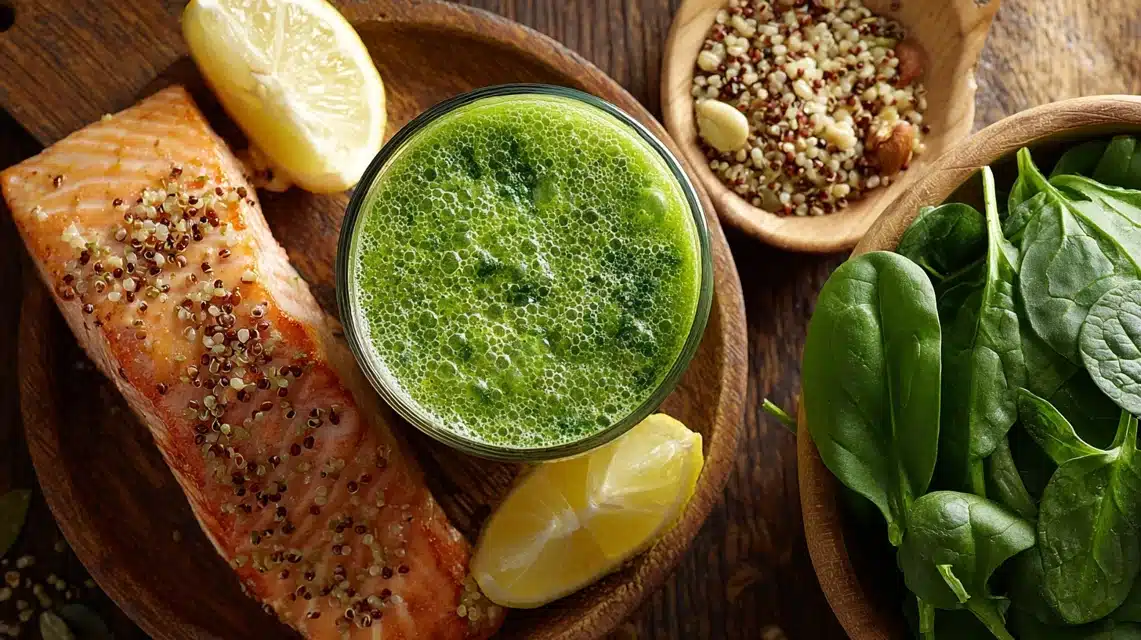
Introduce lean protein sources like lentils, beans, tofu, or grilled chicken. A protein smoothie with spinach and almond milk makes a great breakfast. Lunch could be quinoa with black beans and vegetables.
Dinner may feature baked salmon with broccoli. Snacks might include a boiled egg or a handful of nuts. Adding protein at this stage helps repair tissues, maintain muscle, and balance the nutrient profile of your detox plan.
Day 4: Healthy Fats and Balanced Meals

Incorporate good fats from avocados, olive oil, flaxseeds, or almonds. Breakfast can be chia seed pudding topped with fruit. Lunch may include a salad drizzled with olive oil. Dinner could be roasted vegetables with avocado slices or grilled fish.
Snack on nuts or seeds. These fats support brain function, keep you satisfied, and add energy without heaviness, helping your body achieve a more balanced nutrient intake mid-detox.
Day 5: Antioxidant Boost

Emphasize antioxidant-rich foods like blueberries, spinach, green tea, and turmeric. Breakfast could be a berry smoothie with flaxseeds. Lunch may include a colorful vegetable stir-fry with ginger.
Dinner can be lentil soup seasoned with turmeric and black pepper. Snacks like dark chocolate or pomegranate seeds add variety. Antioxidants help fight oxidative stress, reduce inflammation, and strengthen your immune system, providing a deeper cleansing effect at this stage.
Day 6: Gentle Cleansing with Whole Foods
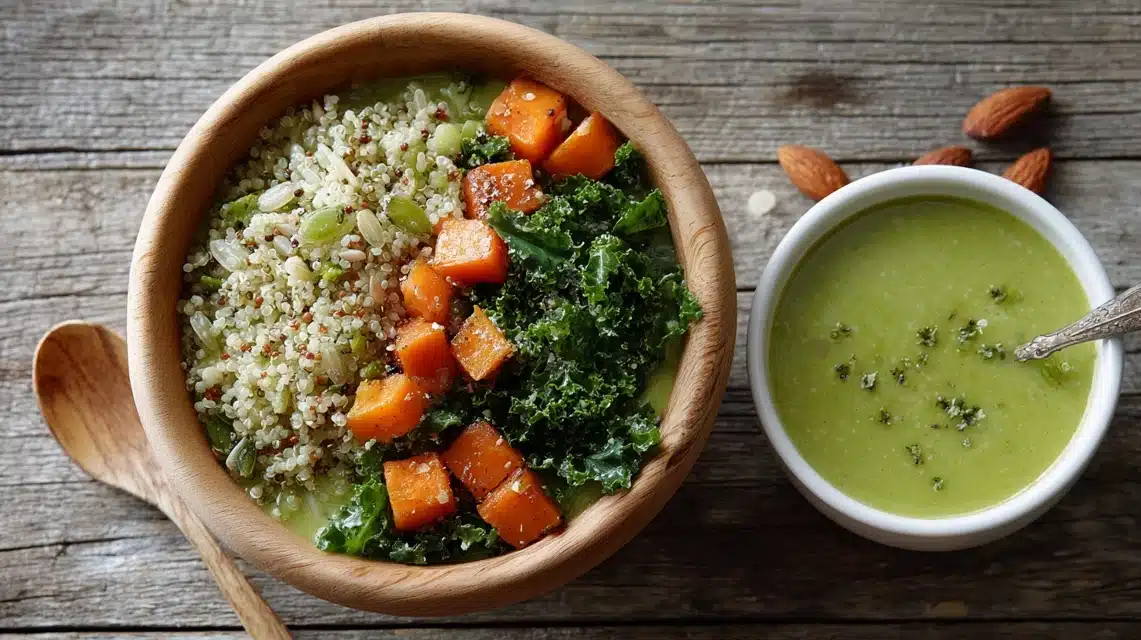
Keep meals light yet nourishing, focusing on fruits, vegetables, and whole grains. Breakfast may feature a green smoothie with spinach and kiwi. Lunch could be vegetable soup paired with quinoa.
Dinner can stay simple with roasted sweet potatoes and leafy greens. Snack on apple slices or raw nuts. This day is designed to be gentle, allowing your body to continue flushing out toxins while maintaining steady energy.
Day 7: Restorative Eating Before Transition
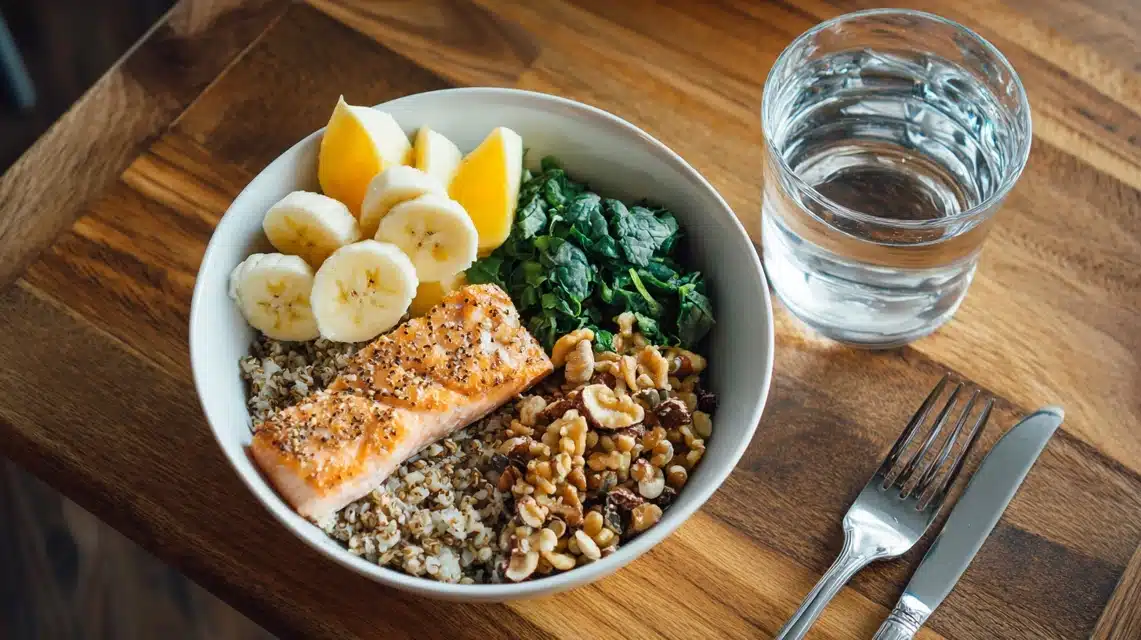
Wrap up the detox with balanced, restorative meals. Breakfast could include oats with banana slices. Lunch may feature a lentil and vegetable bowl, while dinner might be baked salmon or tofu with greens.
Snack on seeds or fruit. Focus on hydration throughout. This final day eases your body back into regular eating, preparing you to transition smoothly into healthier long-term habits beyond the 7-day detox plan.
What to Expect During the 7-Day Detox
During a 7-day detox, you may notice physical changes like reduced bloating, improved digestion, and slight weight loss. Some people also experience better energy levels after the initial adjustment.
However, it’s common to face temporary side effects such as fatigue, headaches, or cravings as your body adapts to fewer processed foods.
Staying motivated is key. Focus on hydration, light activity, and reminding yourself it’s only a week. Keeping meals simple, flavorful, and satisfying will help you stick with the plan.
How to Maintain Results After 7 Days
Finishing a detox is only the first step. The real key is keeping those healthy changes in your everyday routine. Here are simple ways to carry the results forward:
| Focus Area | What to Do | Why It Helps |
|---|---|---|
| Transition to Regular Eating | Reintroduce whole grains, lean proteins, and healthy fats gradually. | Prevents overeating and digestive discomfort. |
| Hydration | Drink at least 8–10 glasses of water daily. | Supports digestion and natural detox. |
| Fiber Intake | Include vegetables, fruits, beans, and whole grains every day. | Keeps digestion regular and supports gut health. |
| Sleep | Aim for 7–8 hours of restful sleep nightly. | Restores energy and balances metabolism. |
| Stress Management | Practice yoga, meditation, or short walks. | Reduces stress-related cravings and fatigue. |
Safety Considerations for Different Groups
Not everyone should approach detoxing the same way. Here are a few things to keep in mind for different age groups, health conditions, and lifestyles to stay safe and comfortable:
1. Teens
Teens need steady nutrients for growth and energy. Restrictive detox diets can cause deficiencies, fatigue, and poor concentration.
Instead of cleanses, focusing on balanced meals with fruits, vegetables, whole grains, and protein supports health safely. Parents and guardians should discourage fad detoxes in teens and guide them toward simple, sustainable eating habits.
2. Older Adults
Older adults often take medications or face slower metabolism. Detox diets may lower energy, interfere with prescriptions, and cause dizziness. Eliminating whole food groups can also limit protein and calcium, leading to weakness.
A safer option is eating small, frequent, nutrient-rich meals while staying hydrated. Consulting a doctor before trying any restrictive detox is strongly advised.
3. Pregnant/Breastfeeding Women
During pregnancy or breastfeeding, the body needs extra nutrients for both mother and baby. Detox diets cut essential calories, protein, and vitamins, which can harm development.
Cleanses with herbs or supplements may even cause unsafe side effects. Instead, women in this stage should focus on balanced, nutrient-rich meals and hydration. Detox plans should be strictly avoided at this time.
4. People With Health Conditions
People with chronic health conditions should be extremely cautious. For example, detox diets can destabilize blood sugar in diabetes or strain the kidneys and liver.
Supplements or strong herbs may also react badly with prescribed medications. A one-size-fits-all detox is unsafe. Anyone with ongoing conditions must consult their doctor before considering any detox plan, even for just one day.
Conclusion
Now that you understand what a 7-day detox is and how it works, you can see if it makes sense for your lifestyle.
When I tried it, the biggest thing I learned was that it’s not about chasing fast results, it’s about slowing down, eating clean, and giving my body a gentle reset. What matters most is making choices that feel safe, simple, and realistic for you.
Don’t stress about perfection. Focus on staying hydrated, eating whole foods, and paying attention to how your body responds. Small, steady habits always work best in the long run.
If you’re ready for more practical ideas, take a look at other posts on the website for healthy routines you can actually enjoy every day!





